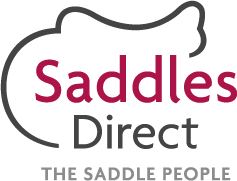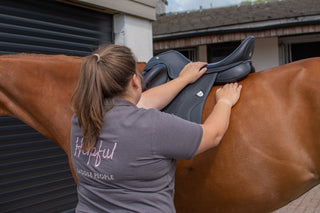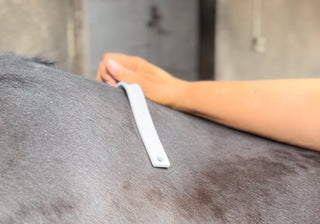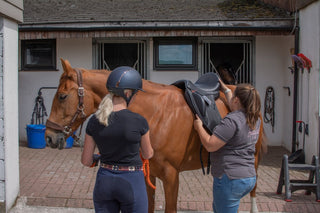Here at Saddles Direct we know that one of the most paramount aspects of equine management is finding and correctly fitting a saddle. A well-fitted saddle can allow an equine partnership to achieve benefits such as improved movement, increased stride length and enhanced rider position, whereas a poorly fitted saddle can have catastrophic consequences. This can present a challenge to many horse owners so here at Saddles Direct we thought we would take you through a step-by-step guide to saddle fitting offering you the opportunity to “get informed”!
Saddle Position
When assessing saddle position it is vitally important that the placing of the saddle is examined on level ground, with the horse standing square. The saddle should sit level and not too far forward or back. Sitting too far forward may restrict the movement of the scapula, so ensure that the saddle placement allows for the shoulder to move freely. The saddle should also not be too long for the horse’s back so the length of the saddle should not lie beyond the horse’s 18th, final rib. Simply using your hand check that the saddle does not proceed this point.
The Pommel, Cantle and Gullet Clearance
The cantle of the saddle should sit slightly higher than the pommel and there should always be sufficient clearance beneath the pommel between the saddle and the back. Try placing 2-3 fingers under the pommel and look underneath and assess under and along the gullet space and make sure the area is not cramped or causing pinching on the vertebrae.
Panel Pressure
Assess the feel and the quality of the panels, which will indicate the amount of pressure placed on the equine back. Check for lumpy flocking which may cause pressure points from gaps where the saddle will not touch the horse. Correcting pressure points or bridging requires a qualified saddle fitter to adjust the flocking.
Saddle Movement
Always check for “rocking” or saddle movement, which can concentrate the rider’s weight on one or two small areas of the horse’s back, often causing soreness. Place one hand on the pommel and the other on the cantle and press with alternate sides to assess movement and rotation. Saddle movement can be caused by uneven flocking or the wrong sized tree or saddle panels which are inappropriately shaped for the horse’s back.
Horse and Rider’s Response
Remember a horse never lies and your equine will tell you whether he is comfortable by his movements and actions. A horse that moves freely, without hesitation or signs of distress, probably is wearing a saddle that fits him correctly. Often horses show a dramatic change in disposition and movement when an ill-fitting saddle is the source of pain.
In addition, it is key to remember how the saddle fit affects the rider. Gone are the days when saddle fitting was solely about the horse, as in today’s more educated approach, the rider’s strengths and weaknesses should also be taken into consideration. Ensuring the saddle not only fits the horse, but the rider too, helps encourage balance and harmony with the horse.
If you have any worries or concerns regarding the fit of your saddle be sure to have to have it checked by your saddle fitter, or give us a call at Saddles Direct on 01282 471 911



